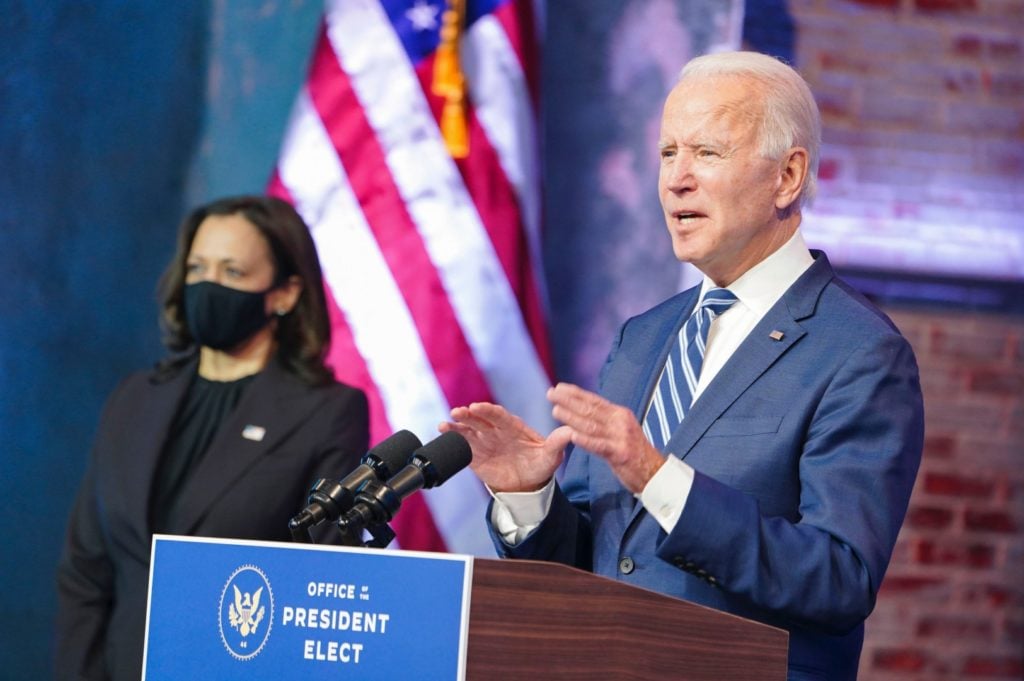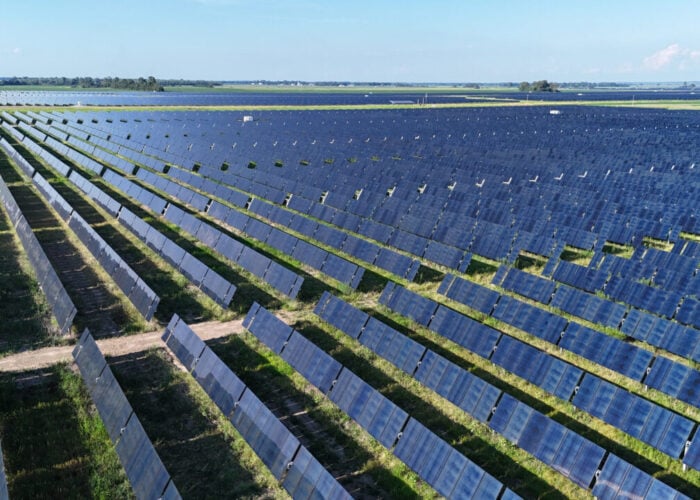
US President Joe Biden has included a 10-year extension for the Investment Tax Credit for both clean power generation and energy storage as part of a US$2 trillion infrastructure investment plan to be unveiled today.
Rumours regarding the investment stimulus had swirled in recent weeks, however today (31 March 2021) the White House released a fact sheet detailing what was to be included in the package, dubbed ‘The American Jobs Plan’, before hosting a call with journalists and senior administration officials.
Try Premium for just $1
- Full premium access for the first month at only $1
- Converts to an annual rate after 30 days unless cancelled
- Cancel anytime during the trial period
Premium Benefits
- Expert industry analysis and interviews
- Digital access to PV Tech Power journal
- Exclusive event discounts
Or get the full Premium subscription right away
Or continue reading this article for free
Included within the plan is a proposal to extend the Investment Tax Credit (ITC) and Production Tax Credit schemes for clean power generation, extending the credit scheme for storage also. The direct-pay option for the ITC will also be maintained within the extension. Credit rates will be phased down over the 10-year period, however specific details regarding the rate of its degression have not been disclosed.
The credits will, however, be paired with “strong labour standards” to ensure that any jobs created as a result of the extension are “good-quality jobs with a free and fair choice to join a union and bargain collectively”, the White House statement reads.
Further measures included within the plan pertaining to clean energy are the creation of an Energy Efficiency and Clean Electricity Standard, intended to cut electricity bills and carbon emissions relating to power generation, while also increasing competition in the market.
Federal government buildings will also be mandated to procure clean power for all of their supply needs on a 24/7 basis.
Grid infrastructure upgrades have also been targeted, and a further investment tax credit will be created to incentivise the development of at least 20GW of high-voltage capacity power lines, supported by a new Grid Deployment Authority at the Department of Energy, to accelerate America’s clean energy transition.
Speaking to journalists regarding the plan’s details, an unnamed senior administration official described the investments as “historic”, before clarifying that the establishment of the clean energy standard would not be pursued via executive authority, but rather through legislature.
“[The clean energy standard] is something that we — that is part of the President’s plan and that he intends to work with Congress… on. This would be part of the legislative proposal to work with Congress on,” the official said.
Progress of the package
Given the size and scope of the plan, there has been much speculation about how the Biden Administration would pursue this strategy. Other stimulus bills have been pushed through as budget reconciliation measures to bypass the need for a majority vote in the Senate, however at US$2 trillion, doing the same with this plan would garner heavy criticism.
White House officials remained coy when asked by journalists yesterday as to Biden’s intended route for the plan, describing its unveiling as the “beginning of a process”, with the full details of the plan set to be released later today. The official hinted that the Biden Administration would be pursuing a route through the legislature, in what would promise to be a hugely complicated procedure requiring the support of Congressional Republicans.
“…We will begin and already have begun to do extensive outreach to our counterparts in Congress — Republicans and Democrats — to build on the plan, to listen, to solicit input, and to identify how we can move forward most effectively here,” the official said.
But plans to help finance the infrastructure investment through an increase in taxation have already been met with stiff opposition. Neil Bradley, executive vice president and chief policy officer of the US Chamber of Commerce, said that while a “big and bold program” was needed to modernise the country’s “crumbling infrastructure”, paying for it via taxation risked slowing any economic recovery from COVID-19.
“…We believe the proposal is dangerously misguided when it comes to how to pay for infrastructure. Properly done, a major investment in infrastructure today is an investment in the future, and like a new home, should be paid for over time – say 30 years — by the users who benefit from the investment,” Bradley added.
A ‘significant step’ forwards
The proposals have however, and perhaps predictably, been strongly welcomed by the renewables and power infrastructure sectors. In a statement issued earlier today, Solar Energy Industries Association chief executive Abigail Ross Hopper described the plans as a “significant step in meeting our collective clean energy goals”.
“The plan has a clear focus on domestic manufacturing, good jobs for all Americans and clean energy woven throughout. SEIA has offered proposals consistent with this plan that will help the economy build back better. Our industry stands ready to add hundreds of billions of dollars in investment and hundreds of thousands of jobs in all American communities,” she said.
Rob Gramlich, executive director at public interest advocacy group Americans for a Clean Energy Grid, also lauded the proposals, noting the potential for the transmission tax credit to enable large-scale grid infrastructure upgrades to move forward in the short term, but immediately raised issues that Biden’s proposed Grid Deployment Authority would need to address.
“The biggest barrier to large scale transmission, even more than siting and permitting, is that there is currently no functioning way to recover costs of the large scale interregional ‘highways’ that we need, through electricity rates or otherwise,” he said.






